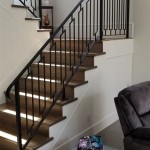Average Size Of Interior Door: Everything You Need To Know
Interior doors play a crucial role in defining the functionality and aesthetic appeal of a residential or commercial space. Understanding the standard dimensions of these doors is essential for homeowners, contractors, and designers involved in construction, renovation, or interior design projects. Deviation from these standards can lead to installation difficulties, operational inefficiencies, and compromised aesthetics. This article provides a comprehensive overview of the average sizes of interior doors, exploring various dimensions, considerations, and factors that influence these measurements.
The term “average size” in the context of interior doors refers to the most common and widely accepted dimensions used in the building industry. These sizes have evolved over time to accommodate human ergonomics, building codes, and manufacturing efficiency. While customization is possible, adhering to standard sizes generally simplifies the installation process and reduces costs.
Standard Interior Door Widths
Width is arguably the most critical dimension when considering interior doors. It dictates the ease of passage and accessibility within a building. Standard interior door widths typically range from 24 inches to 36 inches, with variations depending on the intended use and location of the door.
A 24-inch door is often used for narrow spaces such as closets, pantries, or small bathrooms where accessibility is not a primary concern. This width provides a functional opening while minimizing the space required for the door swing.
A 28-inch door is a common choice for bedrooms and bathrooms in residential settings. It offers a comfortable passage for most individuals while maintaining a reasonable footprint. This size is widely available and often considered a standard option for general interior use.
A 30-inch door is frequently employed in hallways, living rooms, and dining rooms where a slightly wider opening is desired. This width allows for easier movement of furniture and provides a more generous feel compared to narrower options.
A 32-inch door is becoming increasingly popular, especially in new construction, as it offers improved accessibility and ease of use. This width is suitable for most rooms and can accommodate individuals with mobility aids more effectively than narrower doors. It's also a good option for homes designed with future accessibility needs in mind.
A 36-inch door is the widest standard option and is often used in accessible entrances, master bedrooms, or areas where maximum clearance is necessary. This width is compliant with many accessibility standards and provides ample space for wheelchairs, walkers, and other mobility devices.
It is important to note that these widths refer to the door slab itself, and the rough opening (the framed opening in the wall) will need to be slightly larger to accommodate the door frame and any necessary shimming. Typically, the rough opening should be about 2 inches wider and 2 inches taller than the door slab dimensions.
Standard Interior Door Heights
While width is crucial for accessibility and passage, height is equally important for aesthetic consistency and compliance with building codes. The standard height for interior doors in most modern construction is 80 inches, or 6 feet 8 inches. This height is generally considered adequate for most adults and provides a visually balanced appearance within a room.
However, alternative heights exist, particularly in older homes or custom-built structures. Doors with a height of 78 inches (6 feet 6 inches) or even 76 inches (6 feet 4 inches) may be encountered in such cases. These shorter doors can present challenges for taller individuals and may require adjustments during renovations or replacements.
In some contemporary designs, taller doors (84 inches or 96 inches) are used to create a more dramatic and spacious feel. These taller doors are often paired with higher ceilings to maintain proportional balance and can significantly enhance the visual impact of a room.
Similar to width, the height of the rough opening must also be considered. The rough opening should be approximately 2 inches taller than the door slab to allow for the door frame and proper installation.
The standard height of 80 inches is widely accepted and readily available, making it the most practical choice for most situations. Deviation from this standard may require custom door fabrication, which can increase costs and lead times.
Standard Interior Door Thickness
The thickness of an interior door, while often overlooked, plays a significant role in its durability, sound insulation, and overall perceived quality. The standard thickness for interior doors is typically 1 3/8 inches (35 mm). This thickness provides a good balance between structural integrity and weight, making the door easy to handle and install.
Thicker doors, such as those with a thickness of 1 3/4 inches (44 mm), are sometimes used for enhanced soundproofing or in high-traffic areas where increased durability is required. These thicker doors tend to be more solid and robust, offering better resistance to wear and tear.
The thickness of the door directly affects the type of hardware that can be used. Standard door hardware is designed for doors with a thickness of 1 3/8 inches. If a thicker door is used, specialized hardware with longer screws and spindles may be necessary.
The thickness also contributes to the overall weight of the door, which can impact the type of hinges required and the load-bearing capacity of the door frame. Thicker and heavier doors may necessitate stronger hinges and a more robust frame to ensure proper operation and prevent sagging.
While variations in thickness exist, the standard 1 3/8-inch thickness is generally sufficient for most interior door applications, providing adequate strength, sound insulation, and compatibility with standard hardware.
Beyond the primary dimensions, several other factors can influence the choice of interior door size. Building codes often specify minimum door widths for accessibility and egress, particularly in commercial buildings and multi-family dwellings. These codes ensure that individuals with disabilities can safely navigate the space and that occupants can evacuate quickly in case of an emergency.
The style of the home or building can also impact the selection of door sizes. In older homes, smaller door sizes may be common, reflecting the construction practices of the time. Conversely, modern homes often feature larger doors to create a more open and spacious feel.
The intended function of the room is another important consideration. For example, a walk-in closet may only require a narrow door, while a master bedroom may benefit from a wider, more welcoming entrance.
The placement of furniture and other obstructions should also be taken into account when determining door size. A door that swings open into a tight space may be impractical, while a wider door may be necessary to accommodate large pieces of furniture.
Finally, personal preferences and aesthetic considerations play a significant role in the selection process. Some homeowners prefer the look of taller doors, while others prioritize functionality and accessibility.
When replacing existing doors, it is crucial to measure the existing door size and the rough opening accurately. This will ensure that the new door fits properly and that no modifications to the door frame are required. If the existing door is not a standard size, custom door fabrication may be necessary.
For new construction, it is advisable to consult with an architect or contractor to determine the appropriate door sizes for each room. They can help ensure compliance with building codes and provide guidance on selecting doors that meet the specific needs of the project.
In conclusion, understanding the average sizes of interior doors is essential for successful construction, renovation, and interior design projects. By considering the standard dimensions, building codes, functional requirements, and aesthetic preferences, it is possible to select doors that enhance the functionality, accessibility, and visual appeal of a space.

What Is The Standard Door Size For Residential Homes

Standard Interior Door Dimensions Engineering Discoveries

Standard Door Width Important Measurements To Know

Standard Interior Door Dimensions Engineering Discoveries

Standard Door Sizes Hall Bedroom Study Room Bathroom Kitchen And Garage

Standard Door Sizes Width Height Frame Size

Standard Interior Door Dimensions Engineering Discoveries

Standard Door Sizes Important Measurements To Know

Interior Door Guide The Home Depot

A Guide To Updating Your Doors And Hardware Jenna Sue Design
Related Posts








